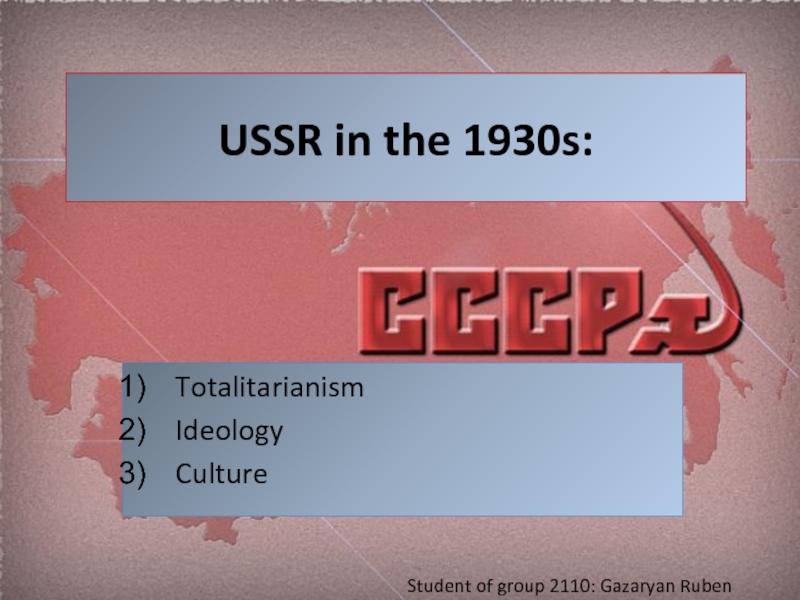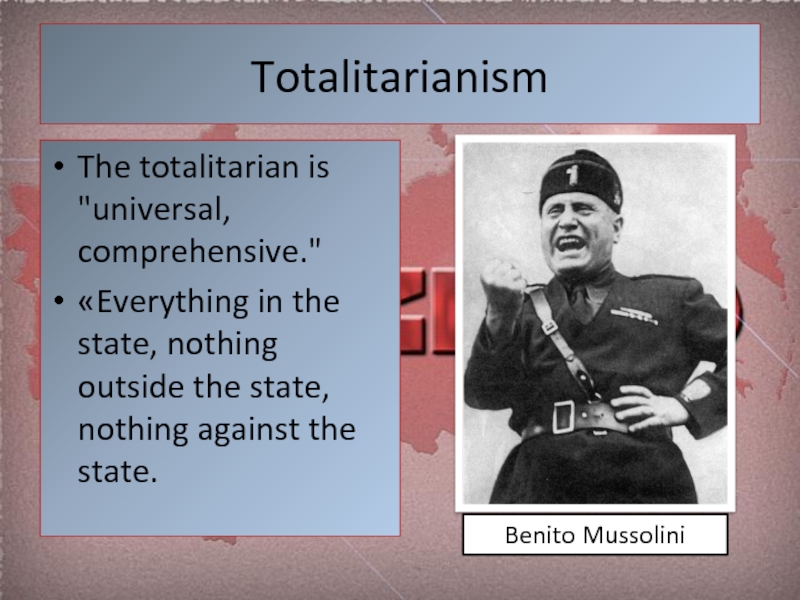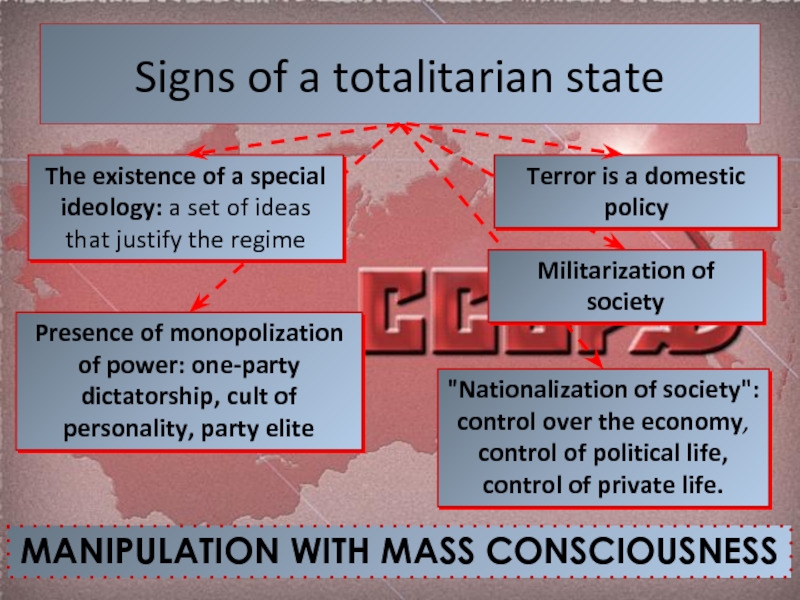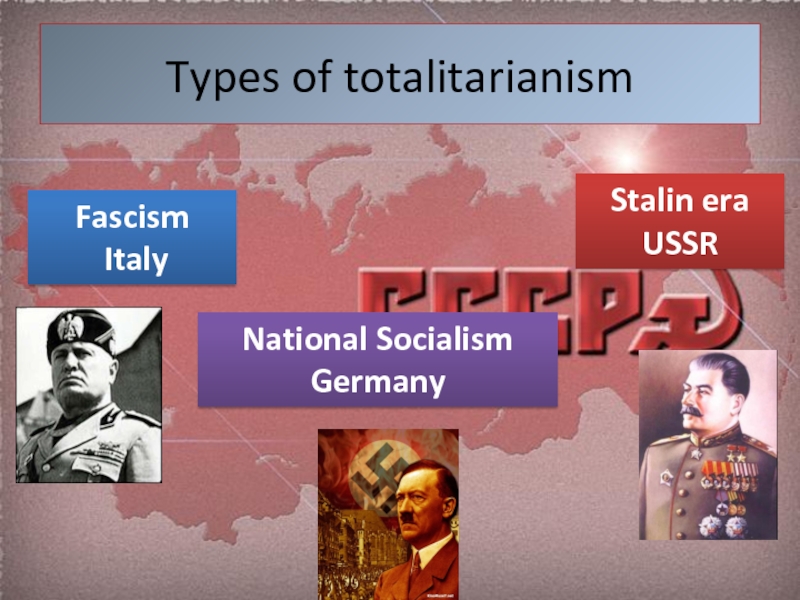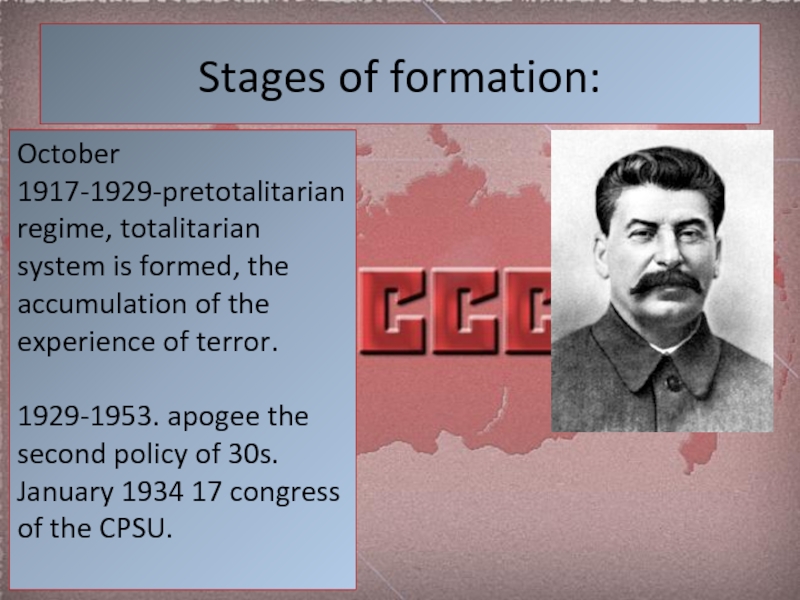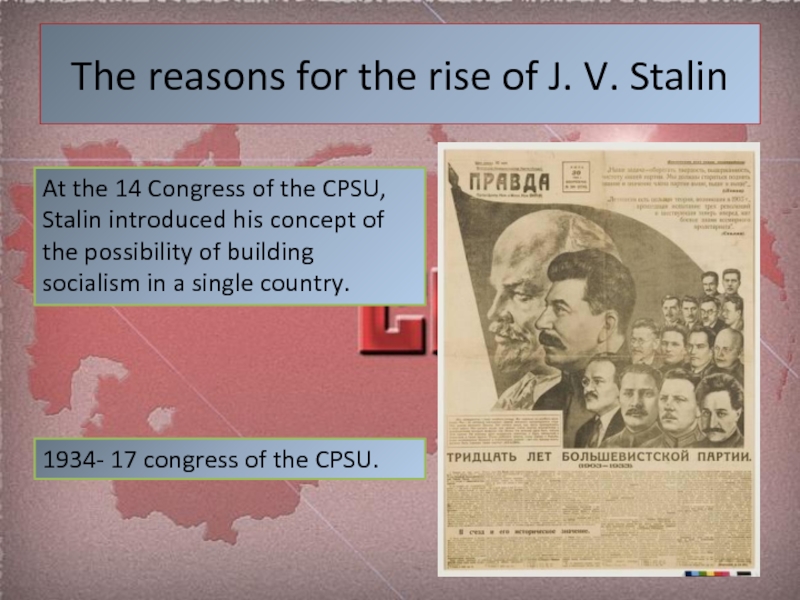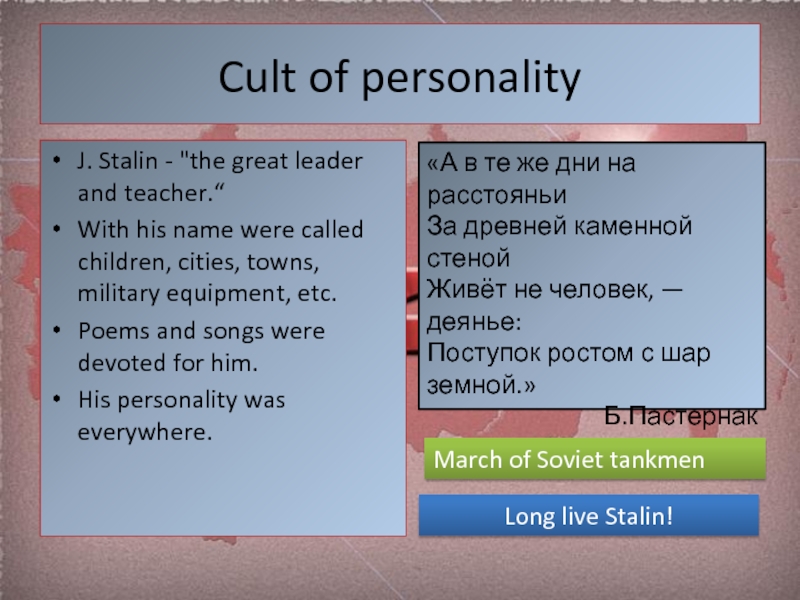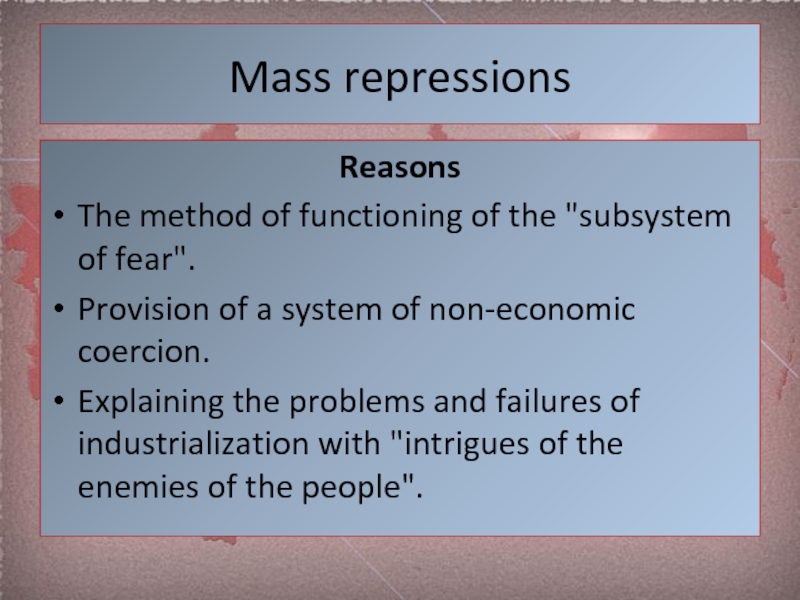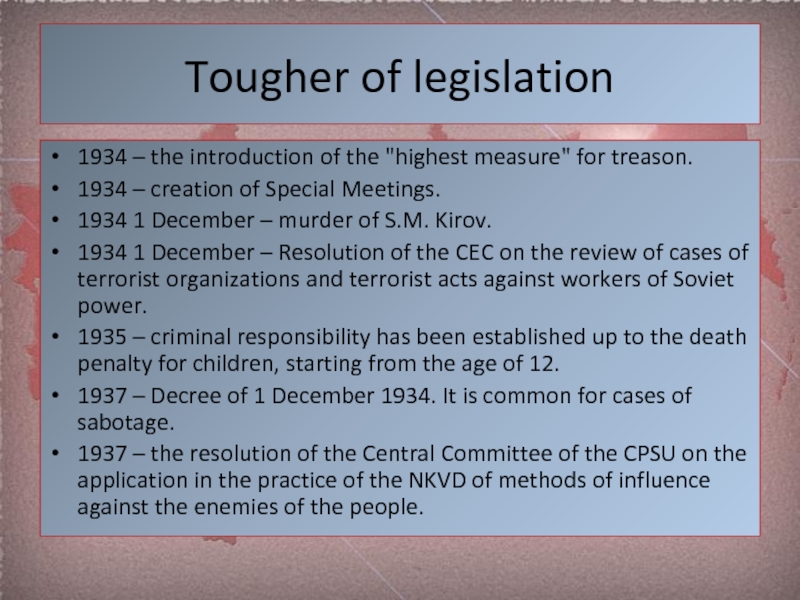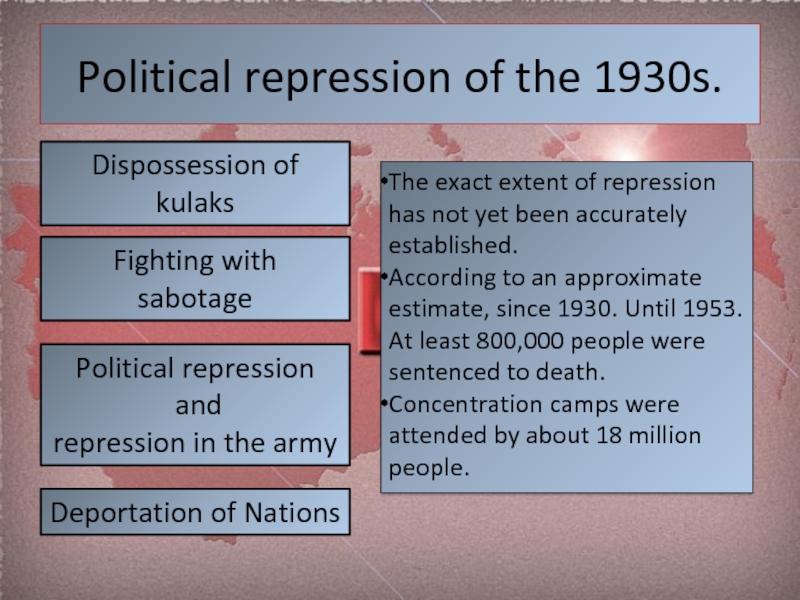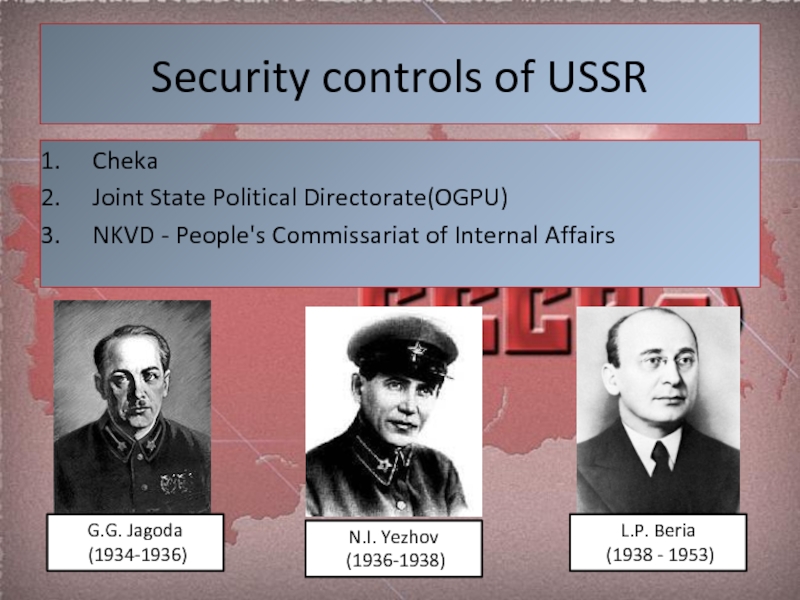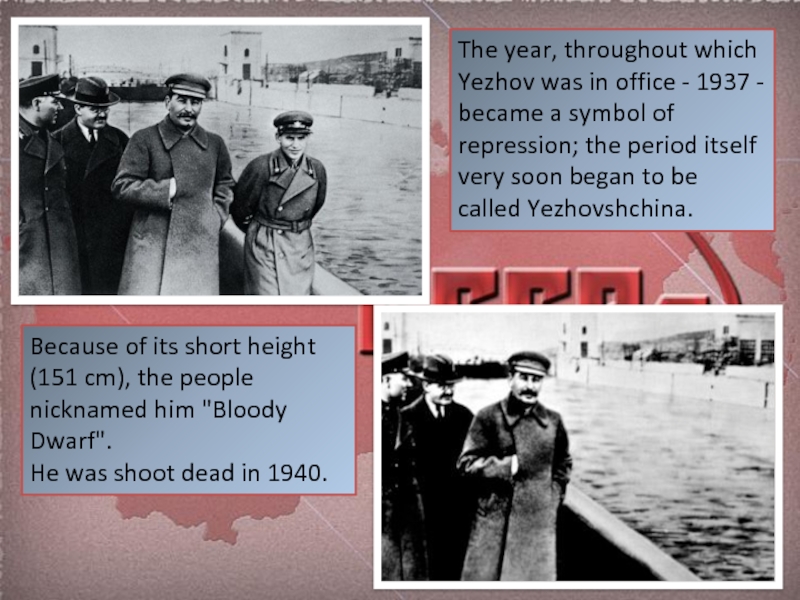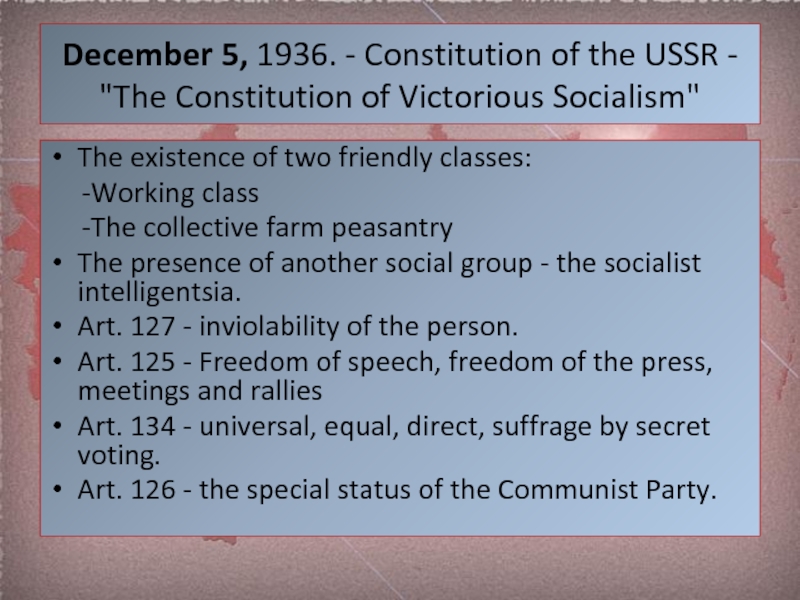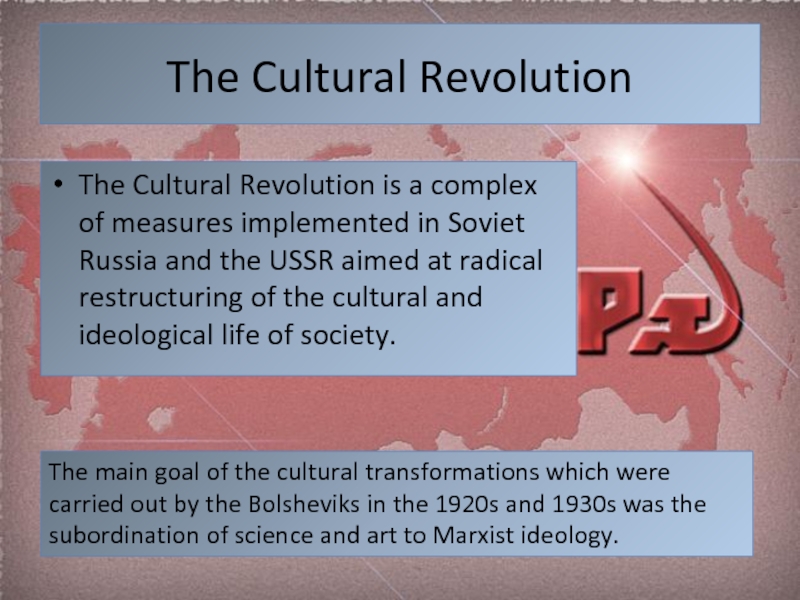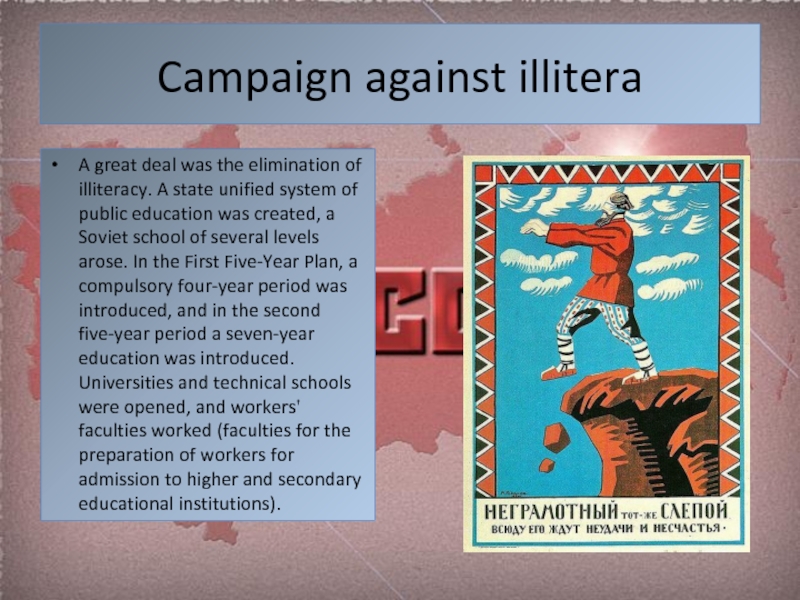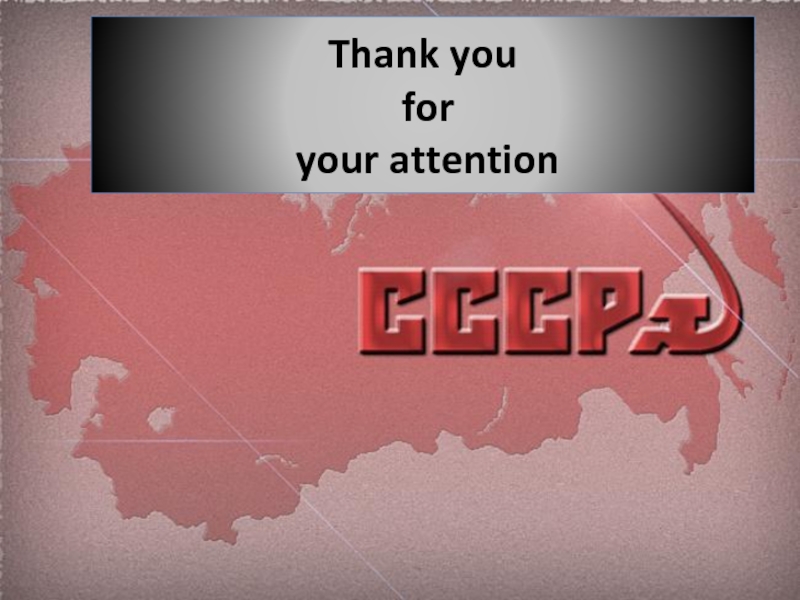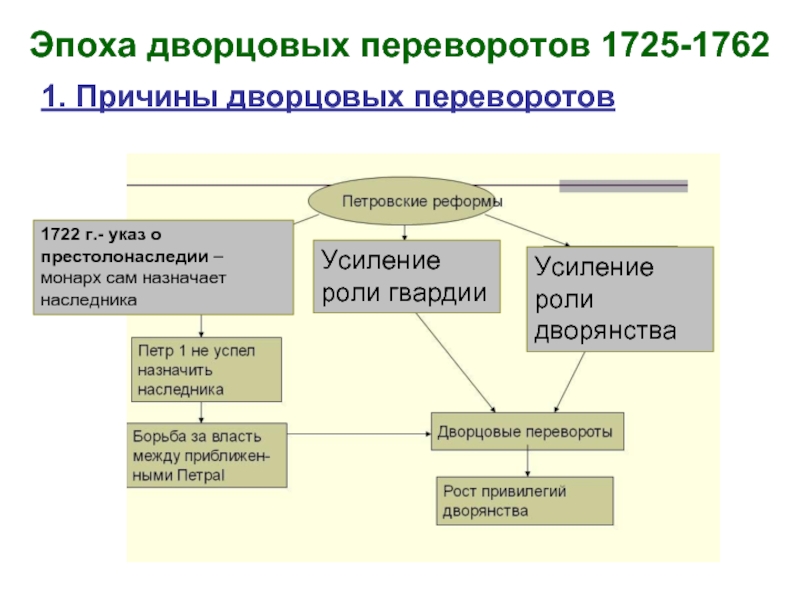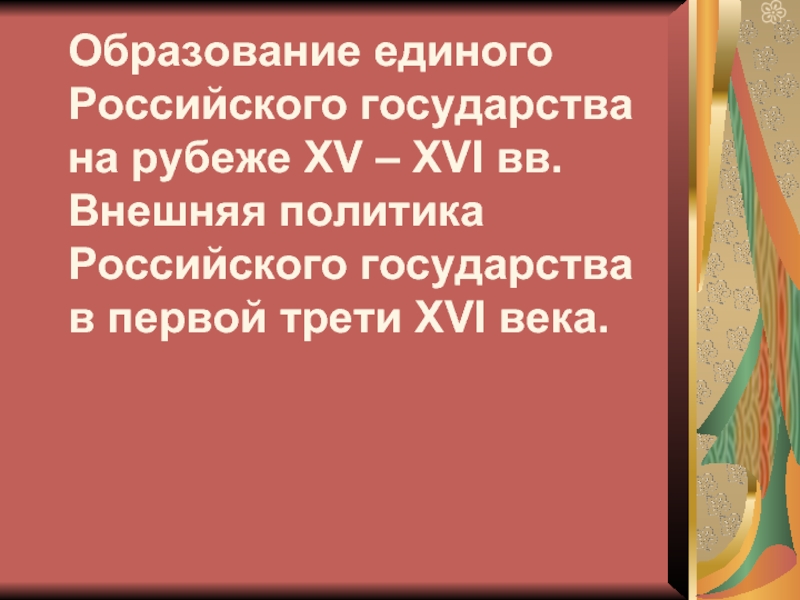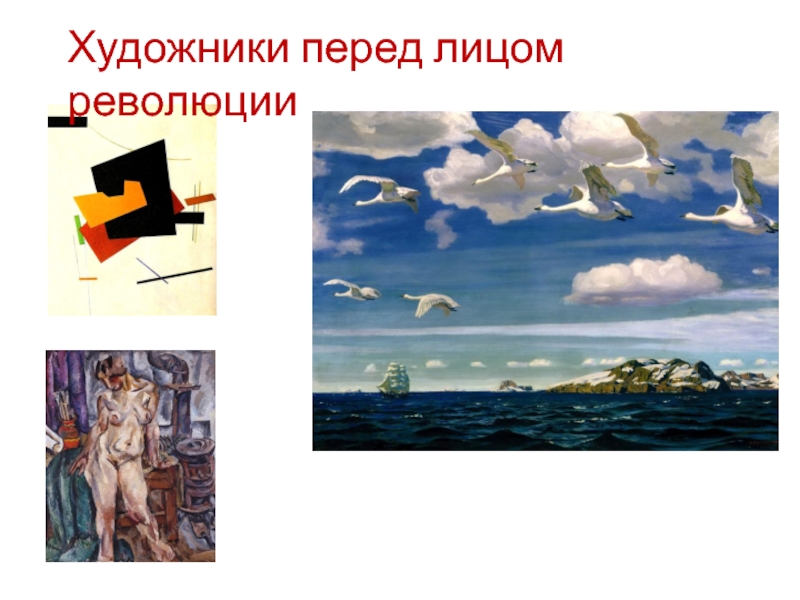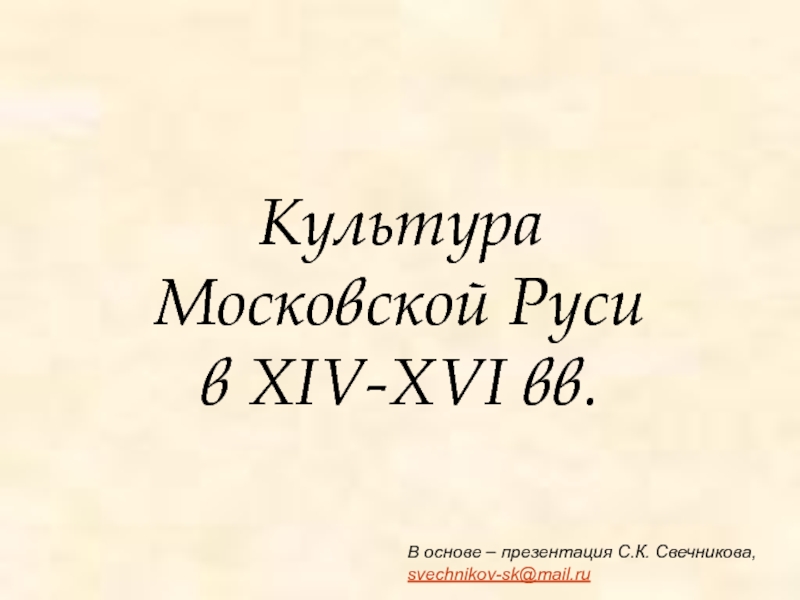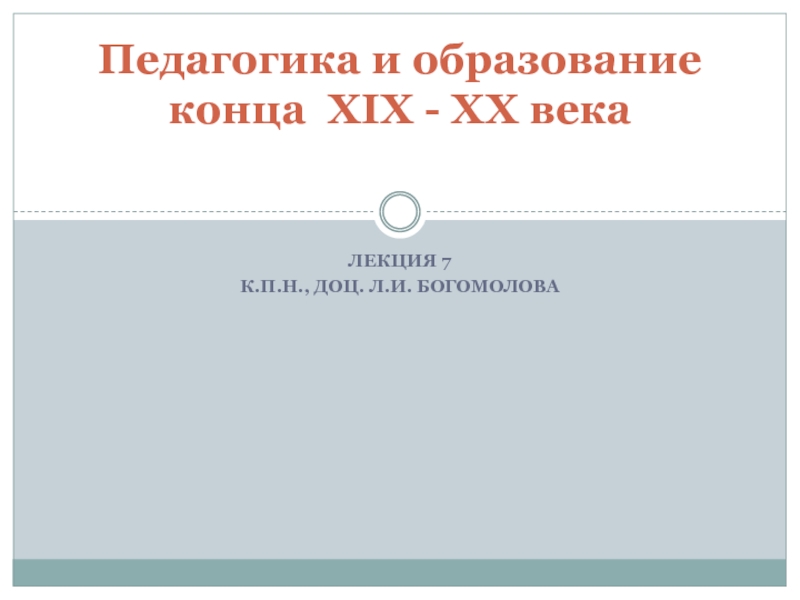- Главная
- Разное
- Дизайн
- Бизнес и предпринимательство
- Аналитика
- Образование
- Развлечения
- Красота и здоровье
- Финансы
- Государство
- Путешествия
- Спорт
- Недвижимость
- Армия
- Графика
- Культурология
- Еда и кулинария
- Лингвистика
- Английский язык
- Астрономия
- Алгебра
- Биология
- География
- Детские презентации
- Информатика
- История
- Литература
- Маркетинг
- Математика
- Медицина
- Менеджмент
- Музыка
- МХК
- Немецкий язык
- ОБЖ
- Обществознание
- Окружающий мир
- Педагогика
- Русский язык
- Технология
- Физика
- Философия
- Химия
- Шаблоны, картинки для презентаций
- Экология
- Экономика
- Юриспруденция
USSR in the 1930s презентация
Содержание
- 1. USSR in the 1930s
- 2. Totalitarianism The totalitarian is "universal, comprehensive."
- 3. Signs of a totalitarian state The existence
- 4. Types of totalitarianism Fascism Italy Stalin era USSR National Socialism Germany
- 5. Stages of formation: October 1917-1929-pretotalitarian regime, totalitarian
- 6. The reasons for the rise of J.
- 7. Cult of personality The expression "Stalin's cult
- 8. Cult of personality J. Stalin - "the
- 9. Mass repressions Reasons The method of functioning
- 10. Tougher of legislation 1934 – the introduction
- 11. Political repression of the 1930s. Dispossession of
- 12. Security controls of USSR Cheka Joint State
- 13. The year, throughout which Yezhov was in
- 14. December 5, 1936. - Constitution of the
- 15. The Cultural Revolution The Cultural Revolution is
- 16. Campaign against illitera A great deal was
- 17. Art Literature and art introduced the method
- 18. Thank you for your attention
Слайд 2Totalitarianism
The totalitarian is "universal, comprehensive."
«Everything in the state, nothing outside
Benito Mussolini
Слайд 3Signs of a totalitarian state
The existence of a special ideology: a
Presence of monopolization of power: one-party dictatorship, cult of personality, party elite
"Nationalization of society":
control over the economy,
control of political life,
control of private life.
Militarization of society
Terror is a domestic policy
MANIPULATION WITH MASS CONSCIOUSNESS
Слайд 5Stages of formation:
October 1917-1929-pretotalitarian regime, totalitarian system is formed, the accumulation
1929-1953. apogee the second policy of 30s.
January 1934 17 congress of the CPSU.
Слайд 6The reasons for the rise of J. V. Stalin
At the 14
1934- 17 congress of the CPSU.
Слайд 7Cult of personality
The expression "Stalin's cult of personality" was widely spread
The cult of personality - the exaltation of the individual by means of propaganda, in works of culture, state documents, laws.
Слайд 8Cult of personality
J. Stalin - "the great leader and teacher.“
With his
Poems and songs were devoted for him.
His personality was everywhere.
«А в те же дни на расстояньи
За древней каменной стеной
Живёт не человек, — деянье:
Поступок ростом с шар земной.»
Б.Пастернак
Long live Stalin!
March of Soviet tankmen
Слайд 9Mass repressions
Reasons
The method of functioning of the "subsystem of fear".
Provision of
Explaining the problems and failures of industrialization with "intrigues of the enemies of the people".
Слайд 10Tougher of legislation
1934 – the introduction of the "highest measure" for
1934 – creation of Special Meetings.
1934 1 December – murder of S.M. Kirov.
1934 1 December – Resolution of the CEC on the review of cases of terrorist organizations and terrorist acts against workers of Soviet power.
1935 – criminal responsibility has been established up to the death penalty for children, starting from the age of 12.
1937 – Decree of 1 December 1934. It is common for cases of sabotage.
1937 – the resolution of the Central Committee of the CPSU on the application in the practice of the NKVD of methods of influence against the enemies of the people.
Слайд 11Political repression of the 1930s.
Dispossession of kulaks
Fighting with
sabotage
Political repression
and
repression
Deportation of Nations
The exact extent of repression has not yet been accurately established.
According to an approximate estimate, since 1930. Until 1953. At least 800,000 people were sentenced to death.
Concentration camps were attended by about 18 million people.
Слайд 12Security controls of USSR
Cheka
Joint State Political Directorate(OGPU)
NKVD - People's Commissariat of
G.G. Jagoda
(1934-1936)
N.I. Yezhov
(1936-1938)
L.P. Beria
(1938 - 1953)
Слайд 13The year, throughout which Yezhov was in office - 1937 -
Because of its short height (151 cm), the people nicknamed him "Bloody Dwarf".
He was shoot dead in 1940.
Слайд 14December 5, 1936. - Constitution of the USSR - "The Constitution
The existence of two friendly classes:
-Working class
-The collective farm peasantry
The presence of another social group - the socialist intelligentsia.
Art. 127 - inviolability of the person.
Art. 125 - Freedom of speech, freedom of the press, meetings and rallies
Art. 134 - universal, equal, direct, suffrage by secret voting.
Art. 126 - the special status of the Communist Party.
Слайд 15The Cultural Revolution
The Cultural Revolution is a complex of measures implemented
The main goal of the cultural transformations which were carried out by the Bolsheviks in the 1920s and 1930s was the subordination of science and art to Marxist ideology.
Слайд 16Campaign against illitera
A great deal was the elimination of illiteracy. A
Слайд 17Art
Literature and art introduced the method of "socialist realism", the glorification
A significant step in its development was made by cinematography: the films "Chapayev" by S. and G. Vasiliev, "Alexander Nevsky"
The most outstanding sculptural work of the 1930s. became the monument of V. Mukhina "Worker and Kolkhoz Woman". Through various creative unions, the state directed and controlled all activities of the creative intelligentsia.
